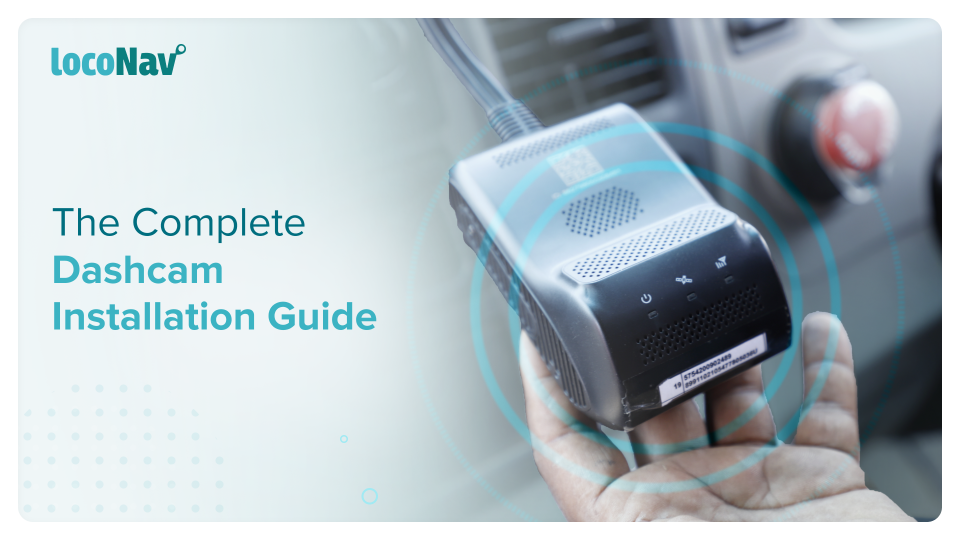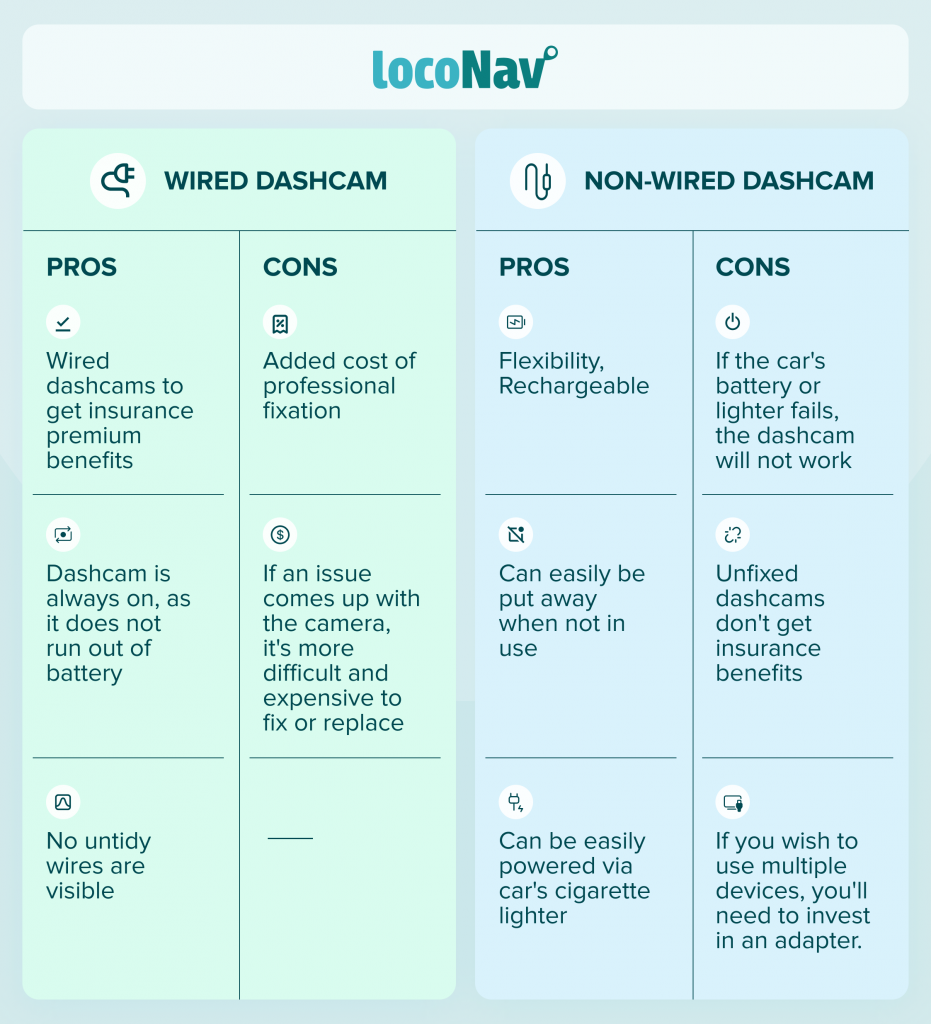

The dashcam, often known as a dashboard camera, has gained in popularity in recent years due to its numerous benefits. Simply put, this is a camera that is mounted on the dashboard of your car and is designed to record audio and video while you are driving. Dashcams have the ability to objectively capture every detail that occurs on the road as well as inside the car, and they can be used for a variety of purposes.
These cameras are currently used by average drivers, driving instructors, taxi and bus drivers, police officers, and others all around the world. One important element of these low-cost, feature-rich cameras is their ability to interface with other onboard devices, such as recorders and GPS devices.
Advanced Video Telematics Solutions at Ridiculously Accessible Prices!
Hardwire vs. Non-Hardwire Dashcam
Hardwiring is a popular installation option among dashcam users across the globe. A hardwire installation negates the need to connect your dash camera to your vehicle’s 12v socket. To install a dashcam fuse box, directly connect your dash camera to your fuse box, giving it a continual flow of electricity without the need to turn on the ignition. Unwired dashcams are significantly simpler to set up. They only need to be connected to your vehicle’s cigarette lighter portal. Both have their own set of advantages and disadvantages:

Should I Hardwire My Dashcam or Not?
The frequency with which you plan to use your dashcam is an important consideration. If it happens only once in a while on a short trip, you could be better off leaving it unattached and using the built-in battery or the lead provided in conjunction with your lighter.
If you want to use it regularly, for longer excursions, or if you have other devices that may require power from the cigarette lighter, having your dashcam hard connected may make more sense.
Another thing to keep in mind is whether you intend to use a dashcam to seek insurance rate discounts. If this is the case, a number of insurers require that the dashboard camera be a properly fixed, permanent fixture within your vehicle’s interior.
Installation of Dashcam
Hard Wired Dashcam
An unfixed installation may normally be completed in a matter of minutes, right out of the box. The majority of dash cams are mounted on the back of the rearview mirror. This is usually accomplished with 2-sided tape or adhesive cups. If you’re powering the gadget with your car’s cigarette lighter, you’ll need to attach the lead for the dashcam to work.
Non-Wired Dashcam
A fixed installation, also known as a hard-wired installation, means that the dashboard camera is permanently installed in your vehicle. You don’t have to worry about ugly wires or power drying out at a critical moment because the power connection is directly attached to the car’s fuse box. With the added intricacy of having a dashcam installed like this, it is essential that you seek professional assistance.
Benefits of a Dashcam Installation
A dashboard camera is an excellent investment, especially given its low cost and simple design, which typically comprises a mic and a fixed-lens video recorder. These basic cameras may be quickly put on your car’s dashboard or windshield. Here are some amazing benefits of installing a dashcam in your vehicle:
- Through insight-driven driver coaching and real-time driver feedback, fleets should expect fewer incidents.
- Because of better-trained drivers, fleets can lower the number of accidents. Fewer accidents can enhance the company’s claims history and raise the likelihood of lower insurance premiums.
- AI-powered fleet cameras detect harmful driving behaviors including drowsiness and speeding.
- Fleet managers can now readily prove who was at blame in an accident. Actual video recording of the incident helps protect fleets from fraudulent insurance claims.